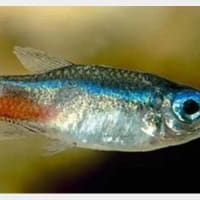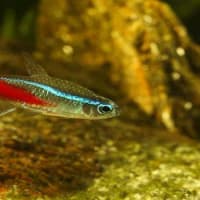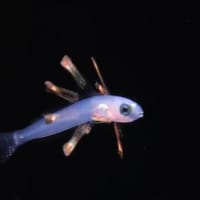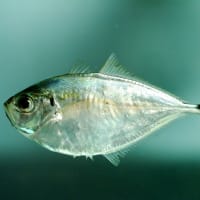
Maintaining a healthy environment for your aquatic pets is essential to their well-being and longevity. In an aquarium that is not properly established or maintained, ammonia can accumulate and reach harmful levels for fish.
Ammonia in fish tank
Ammonia is a toxic substance that released by fish waste and decaying matter, it can be detrimental to the health of fish.The main sources of ammonia are fish waste, uneaten food, and decaying organic matter such as dead plants or fish. Ammonia is produced through the breakdown of these organic substances by bacteria.
In a healthy aquarium, beneficial bacteria called nitrifying bacteria convert the toxic ammonia into less harmful substances, it through a process known as the nitrogen cycle. Initially, ammonia is converted into nitrite (NO2-) by bacteria called Nitrosomonas. But Nitrite is still toxic to fish, so another group of bacteria called Nitrobacter convert it into nitrate (NO3-), which is less harmful to fish in low to moderate concentrations. Nitrate can be removed from the water through regular water changes or live plants that can use it as a nutrient.

What causes ammonia in fish tank
Ammonia spike can happen due to various reasons below:
Overstocking: Having too many fish can overload the biological filtration capacity, leading to excess ammonia production in the tank.
Overfeeding: Feeding fish more than they can consume within a few minutes can result in uneaten food sinking to the bottom and decomposing, releasing ammonia into the water.
Poor filtration: If the aquarium filter is not properly sized or functioning, it may not be able to handle the biological load, allowing ammonia to accumulate to a spike.
Lack of maintenance: Infrequent water changes or failure to remove decaying organic matter can lead to ammonia build-up.
New tank syndrome: When setting up a new aquarium, the beneficial bacteria that convert ammonia to nitrite and nitrate need time to establish. During this initial phase, ammonia levels may rise until the bacterial colonies have grown sufficiently.

Fix ammonia in a fish tank
Now, let’s explore effective strategies to reduce high ammonia levels in fish tank, and promote a safe and thriving habitat for your underwater world.
Regular water changes
One of the simplest yet most effective ways to reduce high ammonia levels in tank is through water changes.
Aim to change approximately 25% of the tank water every one to two weeks, depending on the size and stocking level of your aquarium. Use a siphon or a gravel vacuum to remove any uneaten food, fish waste, and debris. Then, replace the removed water with dechlorinated water that matches the temperature and pH of the tank.
Make a feeding schedule
Overfeeding your fish can lead to excessive ammonia production, so it is crucial to feed your fish the appropriate amount of food, ensuring they consume everything within 2-3minutes. The uneaten food will decompose and contribute to ammonia levels.You should consider a feeding schedule that involves small, frequent meals rather than a single large feeding. This approach minimizes leftover food and reduces the potential for ammonia spikes.
Install a quality filter
An aquarium filter is essential for maintaining water quality in your fish tank. Ammonia is converted into less harmful substances through the nitrogen cycle, primarily performed by beneficial bacteria residing in the filter media. Ensure that the hygger filter is properly sized for your tank and it is clean and replaced regularly. If necessary, consider upgrading to a more efficient filter that provides adequate mechanical, chemical, and biological filtration.
Establish a balanced Bioload
The bioload refers to the total amount of waste produced by the fish and other inhabitants in the tank. Overstocking can overwhelm the biological filtration capacity of your aquarium, leading to increased ammonia levels. Ensure your tank size and filtration system can accommodate them appropriately. It is better to under stock your tank and provide a healthier environment for your fish.
Introduce live plants
Aquatic plants offer numerous benefits.Consider adding live plants to your aquarium to help reduce ammonia levels. Plants also provide additional oxygen, shelter, and aesthetic appeal to your tank.

Test and monitor Ammonia levels
Monitoring ammonia levels in the tank is crucial to ensure the health of the fish. Regularly test in your aquarium using water testing kit allows you to identify any fluctuations or Ammonia spikes promptly. Maintain ammonia levels below 0.25 ppm, as even low concentrations can stress fish and compromise their immune systems. Monitoring ammonia levels will help you take immediate action and prevent any long-term negative effects on your fish.
By following these strategies, you can effectively reduce high ammonia levels in fish tank, and provide a healthier and safer environment for the aquatic pets. The prevention is the key, so maintaining good water quality through regular maintenance practices is vital.




















※コメント投稿者のブログIDはブログ作成者のみに通知されます